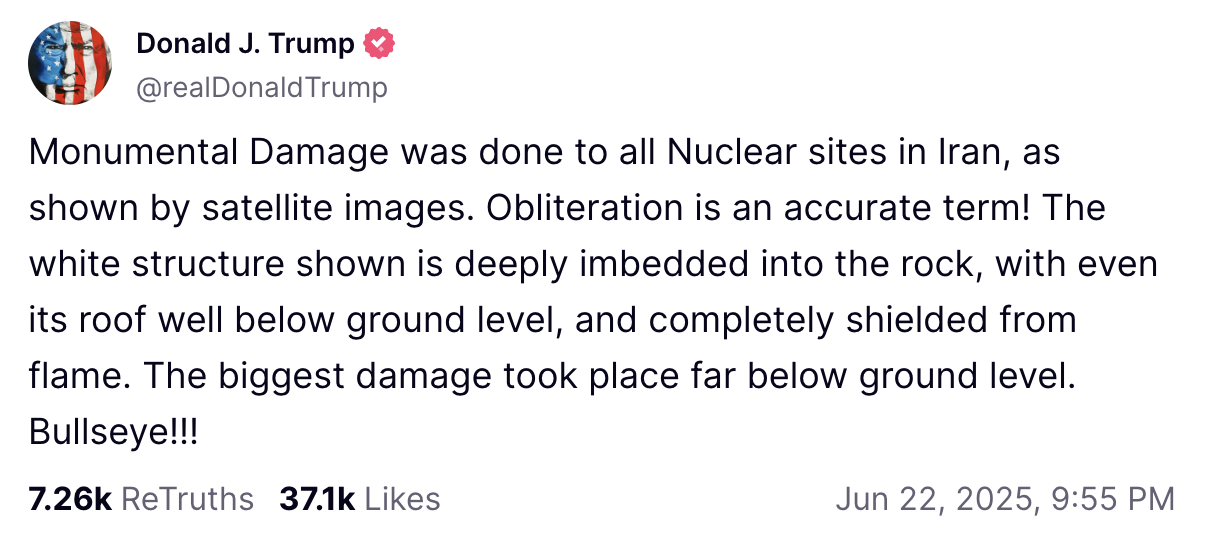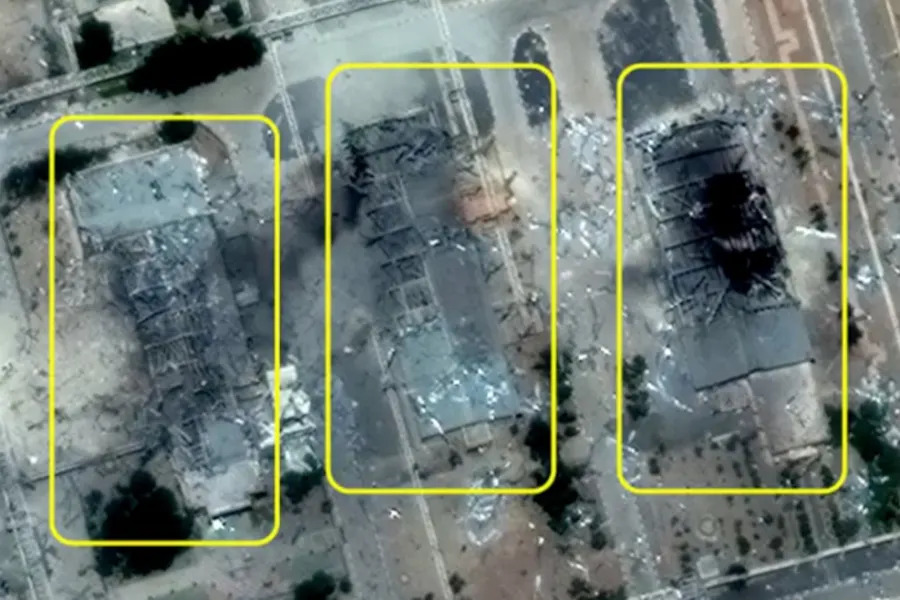Politics
MUST-SEE: Early Photos Of Iranian Nuclear Facilities Surface Post-Strike
Early photos from inside Iran show extensive damage to some of the nuclear enrichment sites pummeled by U.S. bombs on Sunday, reaffirming President Donald Trump’s prediction that the devastating attacks “completely and totally obliterated” them.
Charred and smoldering ruins appear to be all that’s left, according to satellite imagery touted by Trump on Monday.
“Monumental Damage was done to all Nuclear sites in Iran, as shown by satellite images,” he wrote on Truth Social. “Obliteration is an accurate term!”
Iranian officials and state-run media immediately began casting doubt on the president’s assessment of the damage done by 12 “bunker buster” bombs, each weighing 30,000 pounds and designed to penetrate deep beneath the surface of the earth. Fordow, the facility buried deepest, can be seen in the photos with part of its white roof exposed, where the bombs tore away dozens of feet of rock and mountainside that was previously shielding it from the elements.
“The white structure shown is deeply imbedded into the rock, with even its roof well below ground level, and completely shielded from flame. The biggest damage took place far below ground level,” Trump added. “Bullseye!!!”


Manan Raisi, an Iranian lawmaker representing the region where the Fordow site is located, first called the damage from the U.S. attacks “quite superficial.”
“Contrary to the claims of the lying president of the United States, Fordow has not been seriously damaged,” he told Tasnim News Agency, which is affiliated with Iran’s Revolutionary Guard.
Shortly after the attacks, however, U.S. Defense Secretary Pete Hegseth declared, “Iran’s nuclear ambitions have been obliterated.”
“We devastated the Iranian nuclear program,” Hegseth said, AllIsraelNews reports, while adding that the operation “did not target Iranian troops or the Iranian people.”
Dan Caine, chairman of the U.S. Joint Chiefs of Staff, was more circumspect in his assessment, saying the bombs had inflicted “severe damage” on Fordow but stopped short of declaring them obliterated.
Decker Eveleth, a satellite imagery specialist and associate researcher at CNA Corporation, said the satellite imagery is compelling, though not enough to determine if the sites are damaged or destroyed beyond repair.
The hall of centrifuges is “too deeply buried for us to evaluate the level of damage based on satellite imagery,” he told Channel News Asia.
Others said that the 30,000-pound bombs may have done the job.
“If the weaponeering did its job, then Fordow has been massively destroyed,” Dr. Rebecca Grant told Fox News about the first wave of U.S. bombs to hit Fordow on Sunday.
On Monday, Israel announced that a second wave of bombs had hit Fordow, complicating Iranian forces’ abilities to make their way to the mountainous site and assess it for damage. The attack came just 24 hours after U.S. bombs first landed.
The attack presents the greatest threat in decades to the leadership of Ayatollah Ali Khamenei, 86, who has vowed to retaliate against the U.S. and Israel. However, some of the country’s younger contenders seeking to replace him are instead exploring the possibility of taking a softer tack on the world stage.
Two leading contenders include Khamenei’s son Mojtaba, 56, and Hassan Khomeini, grandson of the founder of Iran’s Islamic revolution.
Iranian Foreign Minister Abbas Araghchi posted on X that “Iran reserves all options to defend its sovereignty, interests, and people.”

